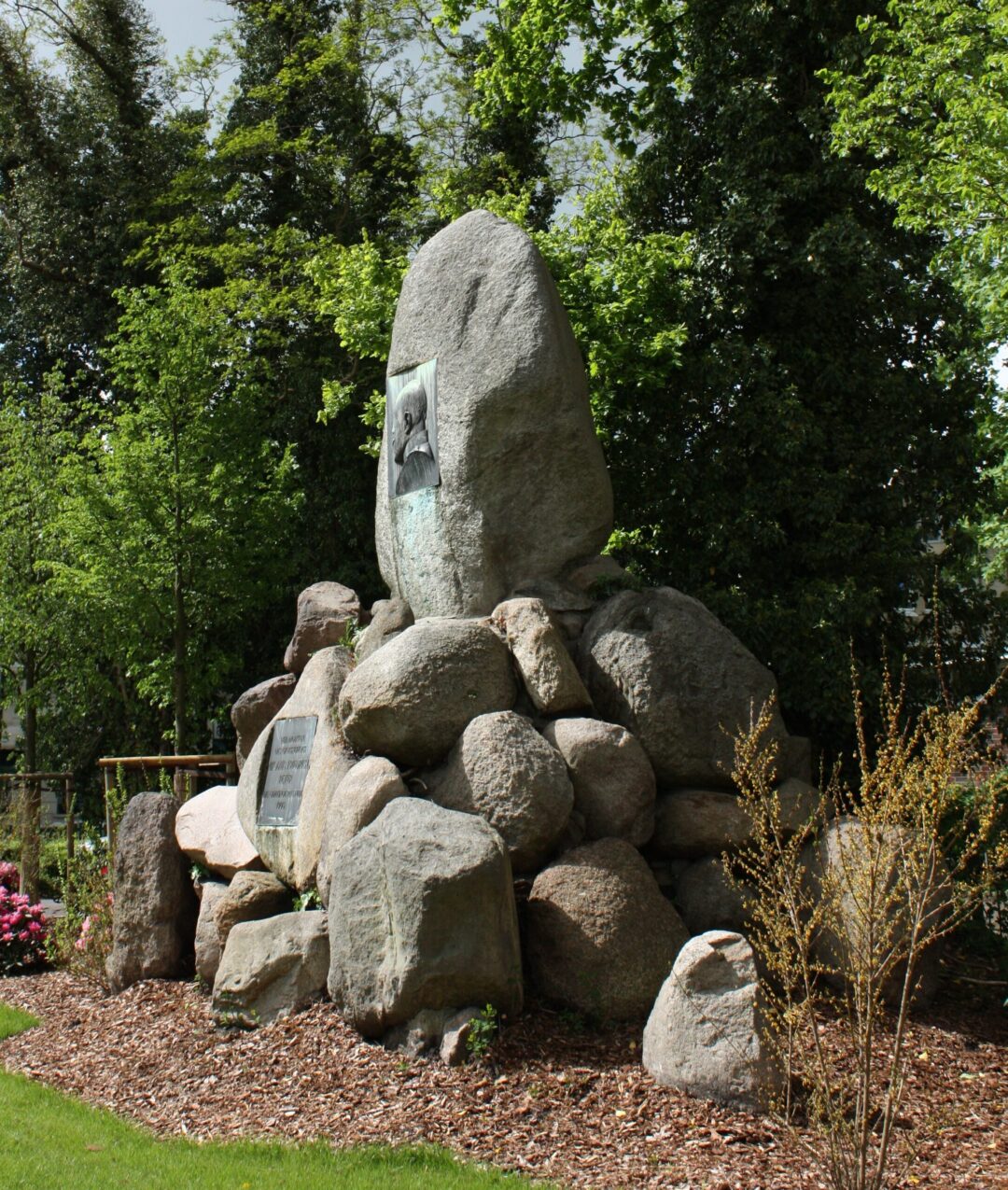Well, it is known that rulers are eager to establish monuments for themselves. That is why the monument to Grand Duke Nikolaus Friedrich Peter in Rastede is very special. The monarch, who ruled the Grand Duchy of Oldenburg for almost the entire second half of the 19th century, is particularly remembered in Rastede. He had the palace and the park generously remodelled and decorated according to his wishes, and he spent much time here. In general, the Oldenburg grand dukes were considered to be very "close to the people", especially as they were not as far away from their citizens as other great and powerful ruling houses of the time. His Majesty Nicholas Frederick Peter could sometimes even be encountered while walking near the palace. Yes, in Rastede, people knew their monarch, not only from afar.
When "old Peter", as the population called him, died in Rastede in June 1900, the consternation was big. At the turn of the 20th century, there was a widespread social atmosphere in Germany that was characterised by a petty-bourgeois subservient spirit, which, from today's perspective, is viewed with a certain discomfort. However, there was something real and honest about the Rasteder people's connection to their old monarch.
Under the chairmanship of the municipal director of Uhlhorn, a committee of Rastede citizens collected donations for the erection of a monument to honour the deceased Nikolaus Friedrich Peter. The appeal for donations, which stated that the Duke had always had "a particularly warm interest" in Rastede, met with a positive response. The station host Loheyde, for example, gave exactly 99.50 marks, a decidedly good amount at the time. When asked about the crooked figure, he explained that the Grand Duke had drunk a rose liqueur at his place during his last visit, but he had not paid for it. Therefore, he deducted 50 pfennigs from the donation.
The most time-consuming part was transferring the huge 12-ton stone from Gut Loy, which in the end, could only be placed correctly with great effort. The bronze portrait medallion donated by the sculptor Harro Magnussen was mounted on it. The monument was announced at its dedication in May 1903 as an "ornament to the village" and "a visible sign of loyal love and devotion". Whether this monument can still be considered an "ornament" today remains to be seen. It is more likely to be a relic of cultural-historical interest and a testimony to a form of ruler worship that is very foreign to us today.
